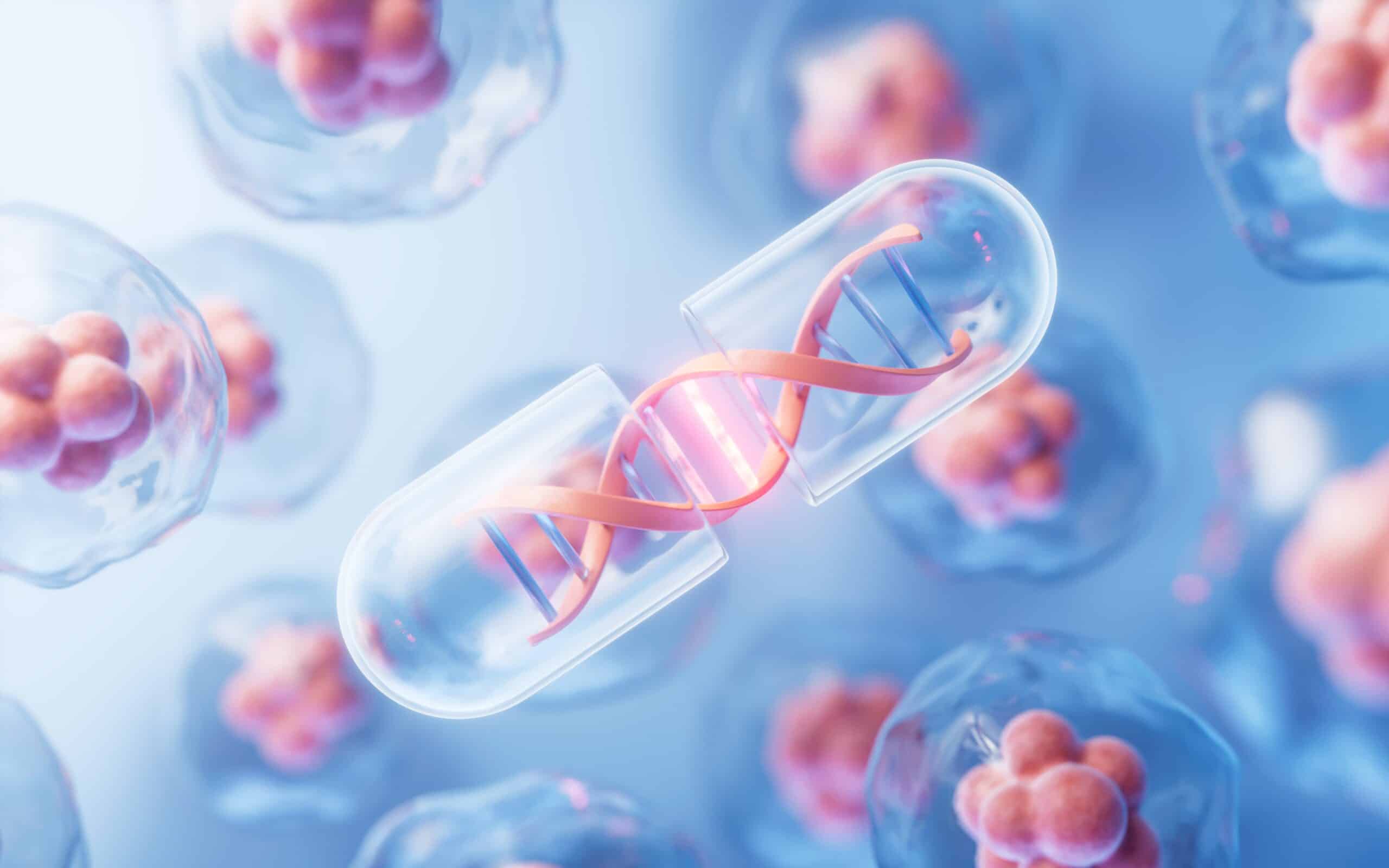The injection of genes into the human brain is an increasingly popular treatment route for severe genetic brain disorders. Unfortunately, scientists face a frustrating obstacle in delivering disease-relevant genes to patients’ brains: the blood-brain barrier, a semi-permeable “filter” that keeps harmful substances out of the brain. Now, researchers from the Broad Institute of MIT and Harvard may have engineered a more efficient gene-delivery vehicle to efficiently cross the blood-brain barrier, using an adeno-associated virus (AAV) to help therapeutic agents enter the brain of each rodent test subject. The team’s findings were recently published in Science.
Improving Human Brain Gene Therapy with AAVs
Gene therapy is a potential treatment for a number of severe genetic brain disorders, including neurodegenerative diseases like Huntington’s disease and single-gene forms of Parkinson’s disease. In gene therapy, scientists generally look to AAVs as a means to deliver the “cargo,” which is the genetic alteration therapy itself, into the brain. This might involve replacing a faulty gene with a healthy copy or introducing a new gene altogether. However, the current list of FDA-approved AAVs cannot efficiently cross the highly selective blood-brain barrier, which reduces the efficacy of the treatment.
Inefficient AAVs have plagued the scientific community for years. Previously, researchers developed AAVs by establishing massive AAV “libraries” and testing each individual virus in animals. But even the most successful AAVs don’t always work in other species. This makes it extremely difficult to develop an effective gene therapy that translates from animal test subjects to human patients.
With this in mind, the researchers at the Broad Institute of MIT and Harvard took a different approach: They developed the first AAV that uses a human protein to efficiently cross the blood-brain barrier, then tested it on humanized mice. Per Medical XPress, the AAV binds to the human transferrin receptor, which is “highly expressed in the blood-brain barrier in humans.”
Identifying Target AAVs for Gene Therapy
First, the team screened a wide selection of AAVs to find a virus that could bind to the human transferrin receptor. Then, they tested the best AAV candidates in humanized mice, which had been genetically modified to express a humanized transferrin receptor. The team identified one AAV candidate: BI-hTFR1, which is able to bind to human transferrin receptors and hypothetically access the brain through the blood-brain barrier.
After injecting BI-hTFR1 into the bloodstream of adult mice, the team found dramatically higher levels of the AAVs in the subjects’ brains and spinal cords when compared to mice without the human transferrin receptor gene. In other words, binding to the transferrin receptor could be the key to transporting therapeutic genetic material across the blood-brain barrier.
Advancing Human Brain Gene Therapy
Not only was BI-hTFR1 transported efficiently, but also it showed 40 to 50 times higher accumulation in brain tissue than AAV9, which is the current AAV that is part of an FDA-approved therapy for spinal muscular atrophy in infants. This suggests that BI-hTFR1 could be much more effective than the current FDA standard AAV. The researchers were also able to show that their AAV could help deliver copies of the GBA1 gene throughout the brain, which could have therapeutic implications for neurological conditions like Gaucher disease, Lewy body dementia, and Parkinson’s disease.
_____
Though further research is needed, the MIT-Harvard team now has strong evidence for BI-hTFR1’s efficacy as a gene therapy delivery vehicle in human patients. Other researchers are already building on these findings; for example, per Medical XPress, one biotech company is developing new therapies using the AAVs to specifically target the central nervous system.
Scantox is a leading European preclinical GLP-accredited contract research organization (CRO). Since 1977, Scantox has been a trusted partner for in-vivo preclinical research services in the pharmaceutical and medical device industries. Our services and expertise enable clients to progress their drug or device development based on consistent, high-quality, solid data to the highest technical and scientific standards. Scantox services support a broad spectrum of preclinical drug development elements, from lead optimization within in vitro and in vivo efficacy models, CNS/neurology, formulation development, and regulatory toxicology studies all the way to manufacturing and distribution of products for clinical trial phase 1 and 2. For more information about our company, visit https://scantox.com/about-scantox/.











